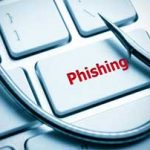Email & Collaboration Security

Email Security
What does Email Security Do?
Email & Collaboration Security provides protection from advanced phishing, malicious links and files.
Secure all incoming, outgoing, and internal emails and get protection from zero-day malware, malicious URLs, and unauthorized applications.
In addition to anti-phishing filtering, SaaS protection, file sanitization, URL click-time protection, and account takeover prevention.
Our Solution
IT Ventures solution is a multilayer anti-phishing software that is built for the cloud and calibrated to your organization to block threats.
Using True Artificial Intelligence and machine learning, this solution analyzes every aspect of an email.
It is gives you complete visibility to monitor your entire suite, and extends beyond email to protect your cloud applications as well.
A higher catch rate means Avanan Protect reduces the amount of phishing reaching the inbox by as much as 99.2%.
Is your email infrastructure protected?
You need to make sure that the following 3 protocols are set for your email domain:
1 - SPF record (Sender Policy Framework)) - Email authentication technique to designate specific email servers from which outgoing messages can be sent
2- DKIM record (DomainKeys Identified Mail) - Provides encryption key and digital signature to verify the email was not spoofed, forged, or altered.
3- DMARC record (Domain Message Authentication Reporting & Conformance)- Further authenticates emails by matching SPF and DKIM protocols.
Email Security Facts
Fact 1: Email Is the Main Attack Method:
Sending a malicious email message to hundreds of businesses is as easy as clicking a button. since abusing email so easy, most cybercriminals do it.
Fact 2: What does Cisco Talos intelligence tell us
Cisco Talos intelligence puts the average daily spam volume at 320 billion (yes, billion). Even though it’s true that most spam emails never reach their intended recipients because they get intercepted by spam filters, some do, and they’re collectively responsible for a staggering 91% of all cyberattacks.
Fact 3: Social Engineering Attacks use Emails
93% of social engineering attacks are delivered by email, while only 3% are associated with phone or SMS communications.
Fact 4: Email-based Phishing often Leads to Data Breach
According to Verizon 2018 Data Breach Investigations Report, “Phishing and pretexting represent 98% of social incidents and 93% of breaches. Email continues to be the most common vector (96%).
” While the biggest data breaches can be the result of hacks and insider threats (such as begrudged employees), it’s easy to see that many of the most well-known and biggest data breaches occurred due to phishing attacks.

Phishing ``A fraudulent practice of sending emails that appear to be from reputable companies in order to induce individuals to reveal personal information, such as passwords and credit card numbers``
